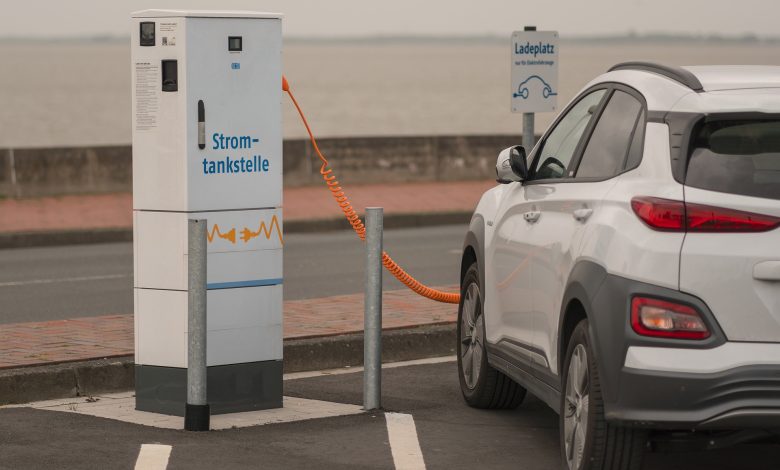The Role of Intelligent Traffic Management and Electric Vehicles in Reducing Traffic Noise

Currently, noise pollution is an important problem especially in urban areas, besides traffic noise is the most important noise source in cities. A large number of cars and other road vehicles with internal combustion engines make road traffic noise a leading source of noise pollution. As the number of electric and hybrid cars increases today, their engines are generally quiet, helping to reduce traffic noise in urban areas. However, the absence of internal combustion engines alone cannot be the only measure of reducing noise levels in urban areas. The purpose of this article is to describe traffic noise, its causes and the role of smart traffic management and electric vehicles in reducing traffic noise.
Ten Ways to Reduce Noise Levels
Here are ten ways to reduce such noise, at the most common traffic sources in urban areas:
• City and region planning
• Designing living spaces
• Sound insulation of living spaces
• Intelligent traffic management
• Application of quiet road surfaces.
• Development of train brake blocks
• Electric cars.
• Changing driving styles.
• Noise barriers.
• Application of the Soundscape concept
It is important to emphasize that these solutions are not the only ones and there are still different opportunities and prospects for the advancement and development of both existing and new methods. In the following sections, a more detailed explanation will be given on how electric vehicles affect the reduction of noise levels, especially in urban areas. On the other hand, the problems experienced in electric cars will be discussed. In addition, the effect of smart traffic management system, traffic behavior changes and quiet road surfaces in terms of noise reduction will be examined.
Electric Vehicles
Electric vehicles present the future in terms of reducing noise pollution in urban areas. Electric vehicles are quieter, especially compared to internal combustion engine vehicles. Electric vehicles at low speeds generate very low levels of noise, meaning that in current urban environments these vehicles are virtually silent and unnoticeable. For example, the noise level difference between an electric vehicle and an internal combustion engine vehicle may be greater than 6 dBA at 10 km/h. At higher speeds, both types of vehicles become equally noisy, mainly due to tire noise.
Intelligent Traffic Management
Intelligent traffic management is a system where centrally controlled traffic signals and sensors regulate the traffic flow in the city in accordance with the current situation on city roads: Amplifying and integrating all signals on the main roads in the city will have many advantages, such as:
• Significantly reduce daily traffic congestion, equalize traffic flows and prioritize traffic in response to real-time demand
• Reducing pollution in the city: stop-and-go driving is inefficient and polluting the environment
• Giving priority to buses approaching intersections and phase coordination of traffic lights that provide a “green wave” in the city.
• The system, which provides a much more efficient response to traffic accidents that occur especially on highways, can be pre-programmed, for example, for a sudden increase in traffic.
• Enable inbound traffic flow control
In addition to the many benefits listed above, the system will also provide an excellent opportunity to install monitoring equipment and collect much more detailed traffic and travel data. Each traffic light set shall have communication equipment that can be used to transmit vehicle data (anonymously) from automatic license plate recognition (ANPR) cameras or Bluetooth detectors and (if applicable) closed-circuit television (CCTV) transmission.
For pedestrians (especially for vulnerable groups: children and the visually impaired) in urban areas, it becomes much more difficult to detect electric vehicles due to the low noise levels mentioned above. For this reason, a solution must be found in the form of an audible signal that electric vehicles will emit in different driving modes. Since 2009, the Japanese government, the United States Congress, and the European Commission have been reviewing legislation to determine the minimum audio signal level emitted for plug-in electric and hybrid vehicles when operating in electric mode. This audio signal level should be such that visually impaired people, other pedestrians and cyclists can hear electric vehicles in motion and detect which direction they are coming from. Various tests and studies have shown that vehicles operating in electric mode below 32 km/h are almost inaudible to pedestrians.
In 2011, the European Commission established guidelines for Acoustic Vehicle Warning Systems (AVAS). The purpose of the guidelines was to provide manufacturers with recommendations for a system to be installed on such vehicles that would give audible signals to pedestrians and other sensitive groups in traffic. Guidelines recommend that AVAS automatically produce a continuous sound from stopping (0 km/h) and starting driving (down to approximately 20 km/h) within the minimum vehicle speed range and when reversing if applicable.
Intelligent traffic management has three components: traffic lights, queue detectors placed on the road (in terms of traffic jams), cameras, and a central control system. Queue detectors identify the traffic flow control system on all major roads in the city. The system controls traffic lights to ensure free traffic flow in the city. Every 2 seconds, the system uses a real-state model to decide whether any of the traffic lights should have priority to change its phase. System software that is considered an “asset” can be defined as, for example, following a bus schedule, less pollution in a particular location, or fewer vehicles waiting at a highway toll booth.
If inbound traffic flow control is used, the farthest groups of traffic lights on main arterial or radial roads serve a special function and are technically known as “gates” or “checkpoints”. They regulate the flow of vehicles entering the city. An example of software for the purpose of intelligent traffic management is the split-cycle and equalization optimization technique (SCOOT), which has been used in hundreds of European cities for decades. In Cambridge it is often used to coordinate traffic signals where buses prefer. In Zurich, Braunschweig and Potsdam, the system is used to control all traffic in the city. The software is deployed with road network “knowledge” and is trained to respond appropriately to a wide variety of scenarios (for example, major traffic “interruptions” such as an accident on major roads). It is important to note that the system also has the option to manually manage and make changes as needed.





